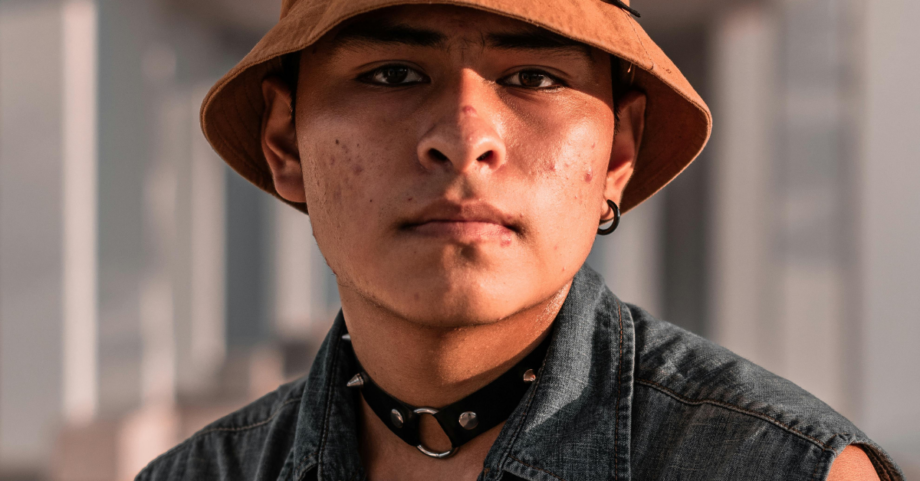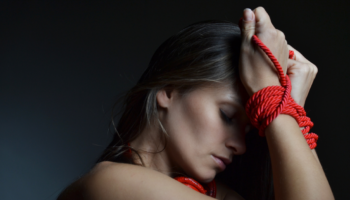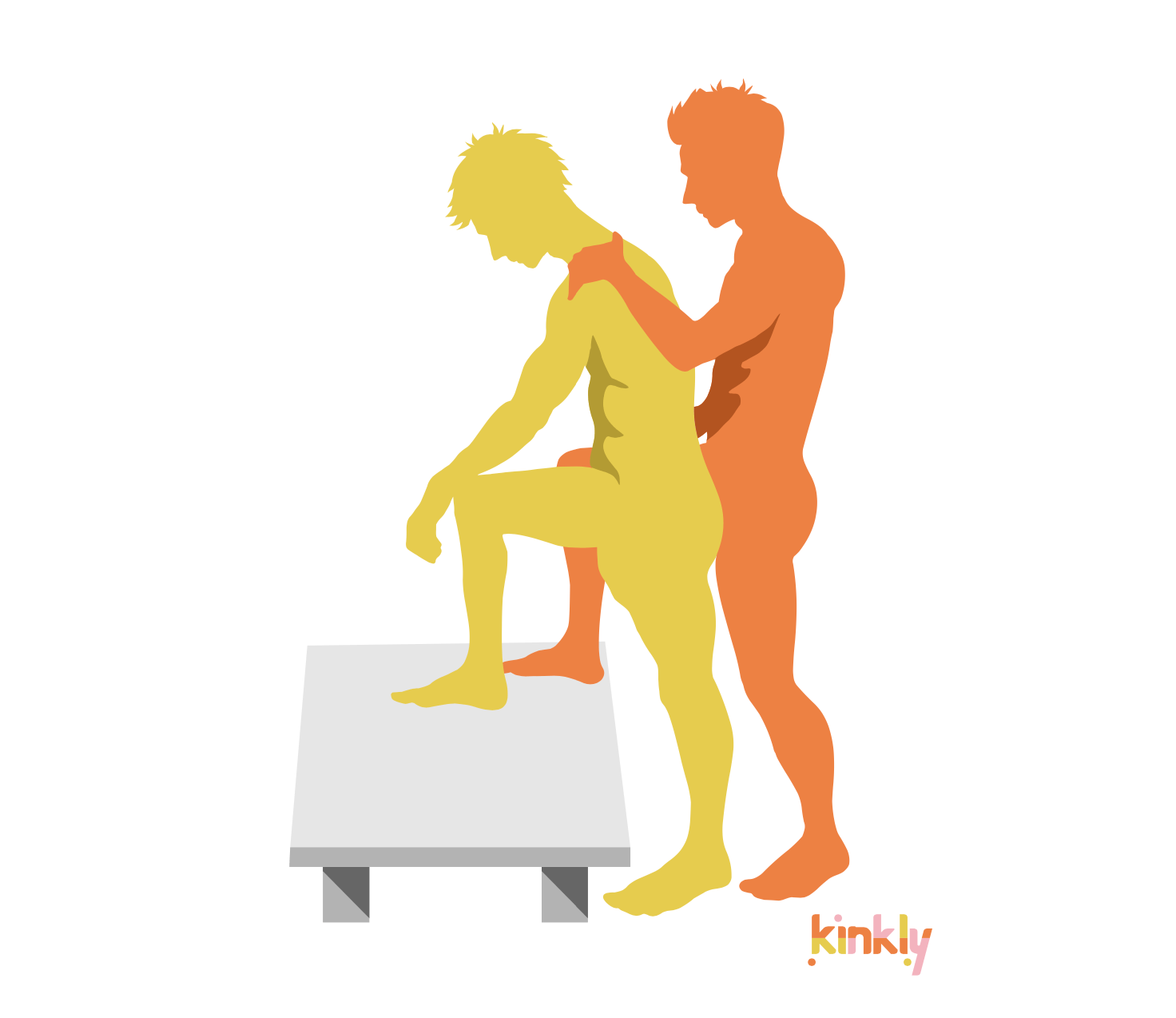A staple of the kink community, the collar is often misunderstood by outsiders. For those in a D/s or M/s relationship, a collar is much more than an accessory. It is a potent symbol of protection, ownership, and submission as well as a badge of devotion, trust, and empowerment. In other words, wearing a collar in submission represents a consensual commitment.
Let's explore the history and cultural significance of BDSM collars, as well as the importance of consent and safety around collaring. I’ll walk you through the different types of BDSM collars, from training collars to permanent collars, and explain the differences between being collared vs. wearing a collar.
What is a BDSM Collar?
A BDSM collar can be a restraint or piece of jewelry with varying meanings depending on the type of collar used. They are often worn by the submissive partner in BDSM play, but dominants may also wear them as well. BDSM collars can come in various types and materials and be used for various reasons and situations.
While collars have also become a widely used fashion accessory in the mainstream, those used in the BDSM subculture often carry deep significance. A submissive who has been “collared” often wears their collar as an outward symbol of their commitment to their Dominant. A collaring ceremony or ritual may be used when the commitment has been made.
For others in the BDSM subculture, a collar may be used within a scene, or for a specific time. This might be as part of kinky play time with their partner rather than 24/7.
History and Significance of the BDSM Collar
Historically, collars have been a symbol of ownership and control dating back to ancient times. In ancient Rome and Egypt, for example, collars were used to signify servitude, often marked with tags to indicate a slave’s status.
Collars make their way to BDSM
There is evidence of BDSM practices dating back to the ancient world, with further accounts of it gaining popularity in the 18th and 19th centuries. While BDSM practices date back much further, the collar specifically was not always apart of BDSM practices.
The exact moment when collaring became an integral part of the BDSM subculture remains unclear, with some sources stating it was first used in the context of pet play with leather straps and dog collars in the 1920s. Between the 1920s and 1940s the surrealist artist, Man Ray collaborated with writer, rigger, and sadist William Seabrook to create a series of fetish art photographs which depict submissives in metal collars.
In the latter half of the 20th century, however, BDSM collars emerged as a prominent feature of the BDSM subculture as a symbol of consensual submission and ownership within a power exchange relationship.
Types of BDSM Collars
There are several different types of BDSM collars, as well as many different reasons and situations surrounding their use.
Collars of Consideration
A “Consideration Collar” comes from the Old Guard Leather community. It is given at the start of a potential long-term Dominant/submissive or Master/slave relationship, but is not the same as a training collar.
According to the Old Guard Leather community, it is often leather and maybe some shade of blue. However, every relationship is unique, and just as there is no hard and fast rule about how you and your partner express yourselves in your dynamic, there is no hard and fast rule about the type of consideration collar you choose. Some may have an anklet, bracelet, or other form of jewelry that symbolizes the dynamic is in a “consideration” stage.
Training Collars
A training collar is given to a submissive partner during their initial training. It is often made from leather or other soft material to be comfortable for extended periods of time.
These are typically used in the early stages of a power exchange dynamic while the submissive is learning and exploring their role. This is typically the second collar given to a submissive after the consideration collar.
Permanent Collars
This is the third type of BDSM collar, and the highest level of collar, given once a commitment has been made in a power exchange dynamic. It is similar to a wedding ring in its status and often worn 24/7, secured with a lock that only the dominant has the key to. They are frequently rolled steel, although some may be made of titanium or other metals.
However, every dynamic is unique, and some may choose to have a permanent collar they wear most of the time, but remove it for work or other reasons. These submissives may opt for another symbol of their commitment.
Permanent collars may also be referred to as an eternity collar, though this name derives from a well-known brand that has become synonymous with a rolled steel lockable collar.
Protection Collars
Sometimes a submissive does not want to be approached by other Dominants, but they also don't want to be in training or have a long-term commitment. They may seek a Dominant that can still provide protection with the use of a collar, which symbolizes that the submissive is off limits. This type of collar is primarily used for protection rather than as a symbol of training or commitment, but it's valuable because it signifies the submissive’s role, but places them off-limits.
Play Collars
Play collars are typically worn for scenes, attending play parties, or specific times. Those who wear play collars may not be engaged in a 24/7 power exchange dynamic outside of the scene.
Some people who are in a 24/7 dynamic, they may have specially designated play collars they were to parties or scenes.
Day Collars
Day collars are typically discrete pieces of jewelry such as a necklace, choker, bracelet, or anklet that a submissive wears when they are unable to wear their permanent collar in a public setting such as work, family events, etc. They may also have a discrete lock or symbol such as a charm or small o ring in some cases. Locking collars for subs come in various styles for male subs, female subs, and non-binary folks from submissive necklaces to steel ring locking collars or chokers.
Being Collared vs. Wearing a Collar
Collaring is something deeply symbolic to a power exchange dynamic. It represents a strong commitment, which differs greatly from wearing a collar for a scene, as a fashion accessory, or demonstrating a personal identity.
Award-winning kink educator and author, TammyJo Eckhart, PhD, explains the significance of collaring from the perspective of a Dominant in a long-term D/s dynamic herself.
“Giving or accepting a collar is as important to people who live in D/s and M/s dynamics. It can be as valuable to use as a wedding band. I would never do it casually and it is a red flag to me if someone immediately voices their desire to get one from me.”
When asked about the protocols around collaring stages, she explained her process: “When I train someone, I have a training collar that I let them wear when we are together. That’s mine; when training ends, that stays with me. If we continue in a relationship, I buy a new collar and I give it to them. I’ve bought these from kink shops or pet shops, and I’ve contracted with a leatherworker to have custom-made ones, too. For me, the material, the color, the look, all of that reflects the personality of my new slave and the uniqueness of our relationship. The one thing I must have when I collar a slave is a lock. Collars without locks feel like fashion statements to me.”
I also spoke with Luna Carruthers, founder of Submissive Guide, who embraced her submissive nature 20 years ago, to get additional input from the perspective of a 24/7 submissive.
She states, "For many submissives, collaring holds a profound significance, a monumental moment in their relationship with their Dominant partner. A collar is more than just a physical symbol of submission or ownership; it represents a deep emotional connection, trust, and commitment between partners. Receiving and wearing a collar can be a powerful symbol of a submissive's devotion and surrender to their Dominant that is equal to or held to a higher importance than a wedding ring."
In essence, collaring is a profoundly symbolic act in a power exchange dynamic and shouldn’t be entered into lightly. It requires care and negotiation as to what the process means. It is a foundational part of the BDSM subculture that carries immense significance. Wearing a collar as a fashion accessory or without a connection to a dynamic, on the other hand, is a highly debated topic in BDSM communities due to the deeply meaningful nature collaring represents.
Sizing and Fit
A well-fitting collar is essential for comfort and safety. Measure your neck circumference to determine the correct size. Most collars come in standard sizes, ranging from 13 to 18 inches. If you're unsure, consider an adjustable collar or consult with a professional.
Materials and Sensitivities
Collars come in a variety of materials, including leather, metal, rubber, and fabric. It's crucial to consider any allergies or sensitivities:
- Leather: Ensure it's high-quality and well-tanned to avoid irritation.
- Metal: Look for nickel-free options if the wearer has a nickel allergy. The best options are stainless steel, titanium, or 14k gold.
- Rubber and Latex: These can cause reactions in those with latex allergies.
- Fabric: Choose hypoallergenic materials like neoprene or soft cotton.
Always patch-test a new material on the wearer's skin before committing to a full-time collar.
Comfort and Practicality
A BDSM collar should be comfortable to wear for extended periods. Look for features like:
- Padded or cushioned interior
- Adjustable straps or buckles
- Breathable materials
Practicality is also crucial. Consider a collar with a quick-release mechanism or a hidden lock to prevent accidental unfastening.
Personal Preferences and Aesthetics
Your collar should reflect your personal style and preferences. Choose from various materials, colors, and designs to match your unique aesthetic. Some popular options include:
- Leather or vegan leather
- Chain or rope collars
- Studded or spiked designs
- Custom engravings or charms
- Special details negotiated between you and your partner(s)
Communication and Negotiation
A BDSM collar is not just a personal choice, but also a symbol of your relationship with your partner. Communicate openly about your desires, boundaries, and expectations.
Discuss:
- The meaning and significance of the collar
- The level of commitment or submission it represents
- Any rules or protocols associated with wearing the collar
- And negotiate the terms of your relationship and ensure you're both comfortable with the collar's implications. Consent is paramount.
What type of BDSM collar should you choose?
Choosing the perfect BDSM collar requires careful consideration of sizing, material, comfort, practicality, personal preferences, and communication with your partner. By weighing these factors through open and honest communication, you'll find a collar that complements your style and enhances your relationship dynamic.


















